Ron Frenette of Canadian Canoes emailed me after he’d seen the Dragonfly rowing shell featured as the Reader Built Boat in our January issue. He elaborated on the reasons the Dragonfly wasn’t developed more for home builders: “At one time we thought this would be a great project for many, but I suspected the amount of space required would be a deterrent.”
That led to swapping stories about boatbuilders with a will finding a way when space is an issue. Rann Haight, as you may recall reading in the December 2015 issue, designed an oversized garage for his home to allow him to build a 26′ dory. My friend Eugene Arima, a well known authority on Arctic kayaks, didn’t have enough room to build a kayak in his walk-up flat in Ottowa, so he built it in the longest space he had: the stairwell. It’s the only boat I know that was constructed on the diagonal.
Sometimes the “way” comes unintentionally, late in the game. Ron mentioned that one of his customers “built a 17′ Redbird canoe and it would not come out of the basement where it was built. Several thousand dollars later, he had a whole new basement entrance with a sliding door and one very unhappy wife!”
I had a similar experience building a lapstrake decked canoe in the basement of a rental home in Silver Spring, Maryland, when I was working for the Smithsonian Institution in Washington, D.C. I had carefully measured the window that I’d intended to use to get the canoe out of the basement and the beam and depth listed in the plans would result in a boat just small enough to slip through. When I finished the canoe I tried to move it out of the basement and soon realized that the outwales were not included in the measurement for the beam. The window had a steel frame so I took a hacksaw to it and cut two notches for the outwales.
Before moving out of the house I filled the notches with aluminum and Bondo and painted the repair to blend in. That was in 1989 and when I was in the DC area a few years ago, I drove by and checked the window. The patches were still intact.
You’d think that was a lesson I’d have learned, but when I built my garvey cruiser HESPERIA on top of the pool table in the family room on the ground floor of my Seattle home, I had a similar problem. The hull should have fit through the door to the garage/shop and then out to the driveway, but it got hung up in the doorway. I had to tear out the top of the doorframe to make room. That was only the first obstacle. The overhead furnace ductwork was at the same height as the doorframe and I had to remove the sheetrock covering it. The hatchet I need for the job was in a cabinet on the far side of the hull. The bottom of the boat was up against a corner that projected into the garage, so to get the hatchet I had to crawl through the small triangular space between the floor and the hull’s flared side. It was a tight fit and I could only advance if I emptied my lungs to shrink my chest. I’d exhale and squirm, then get stuck when I inhaled. It took a few minutes to get through and after I got the hatchet I had to inch back through the gap to get out. I hacked the sheetrock away and squeezed the hull through.
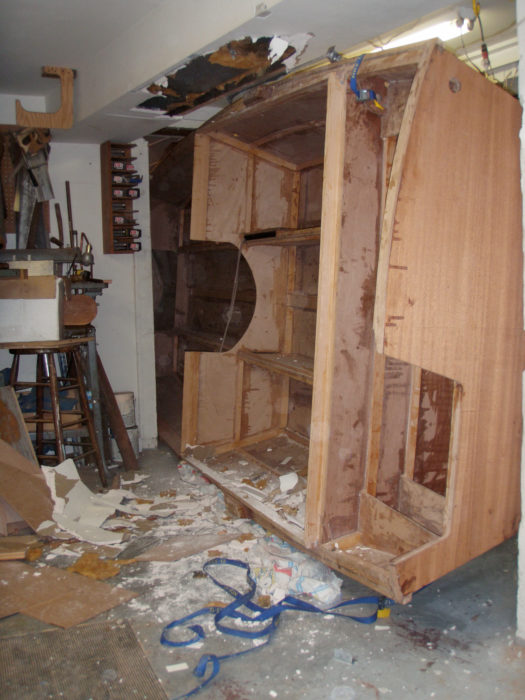
Something had to give and it wasn’t going to be the boat. The top of the doorframe and the sheetrock had to go.
While I was building the boat several of my daughter’s friends bet I’d never get the boat out. Alison wasn’t doubtful, telling the skeptics: “You don’t know my Dad. He’ll tear the house apart if he has to.”![]()
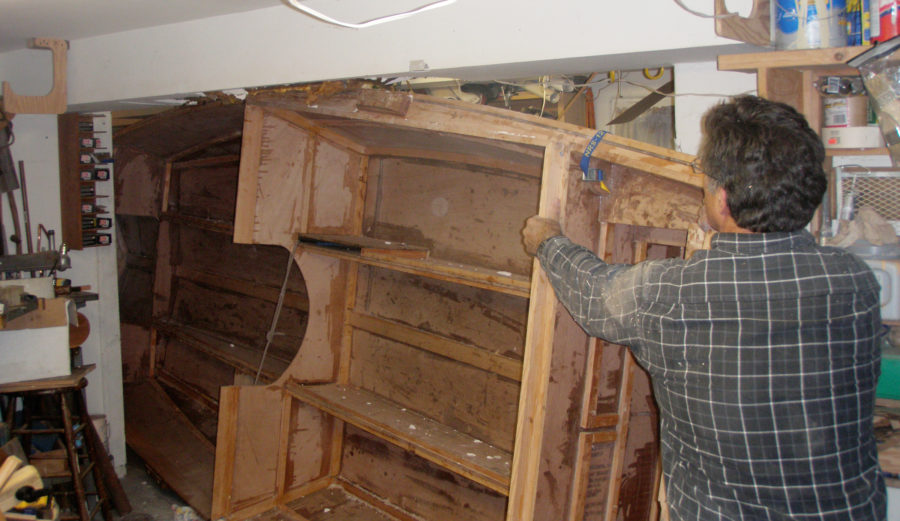
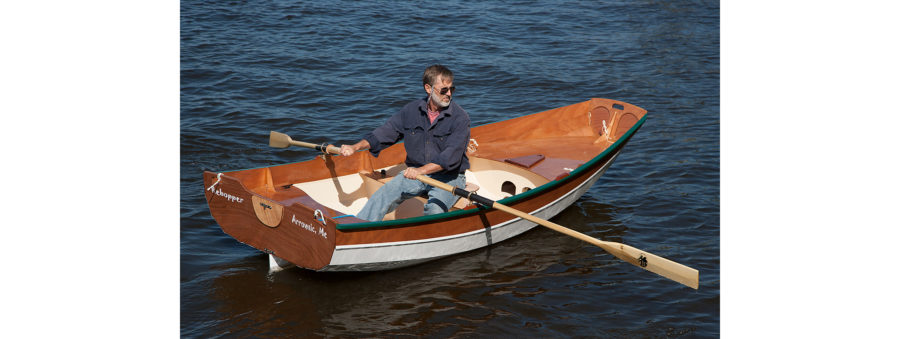


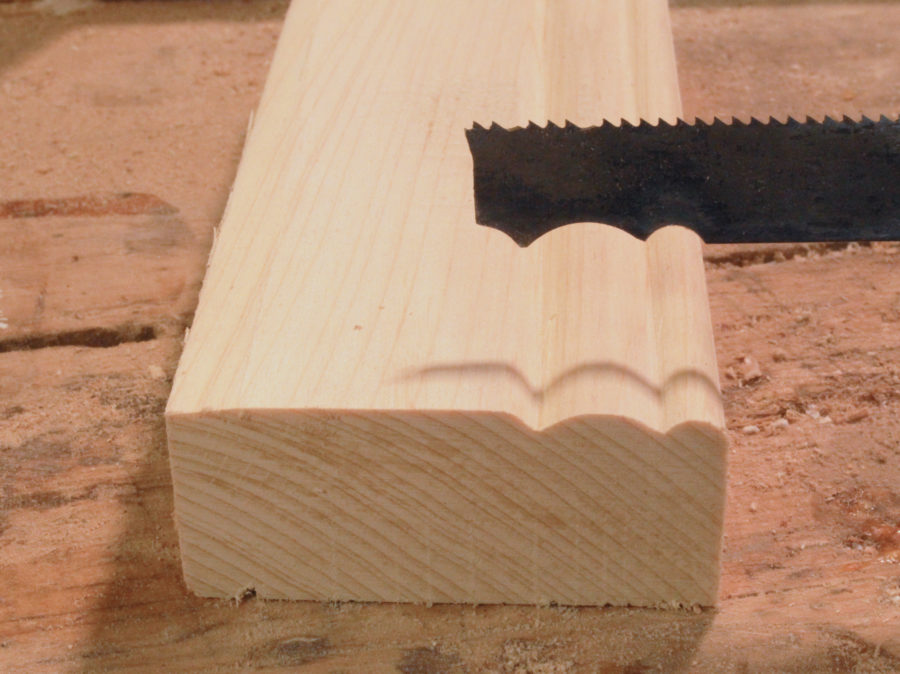
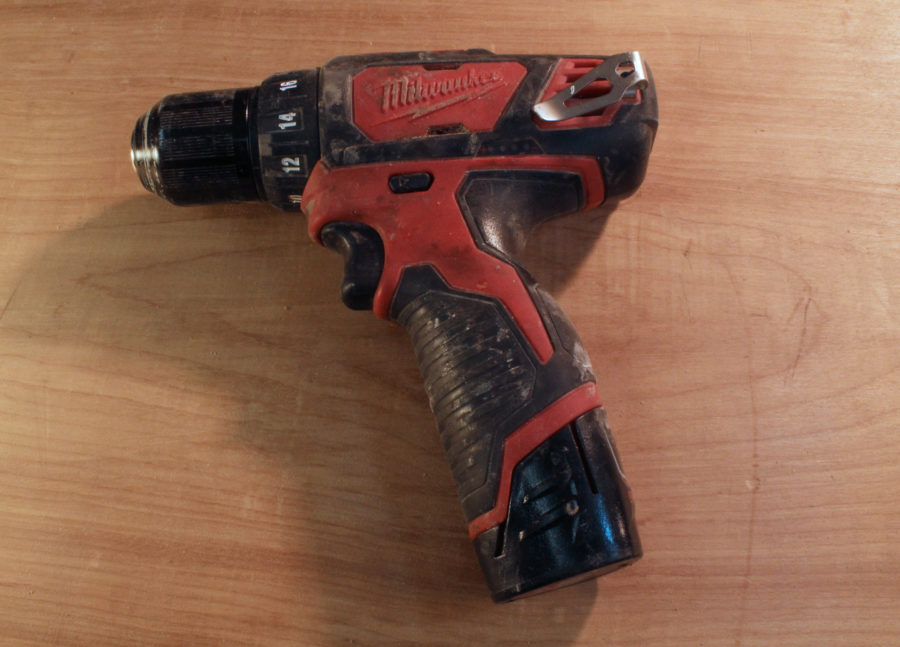
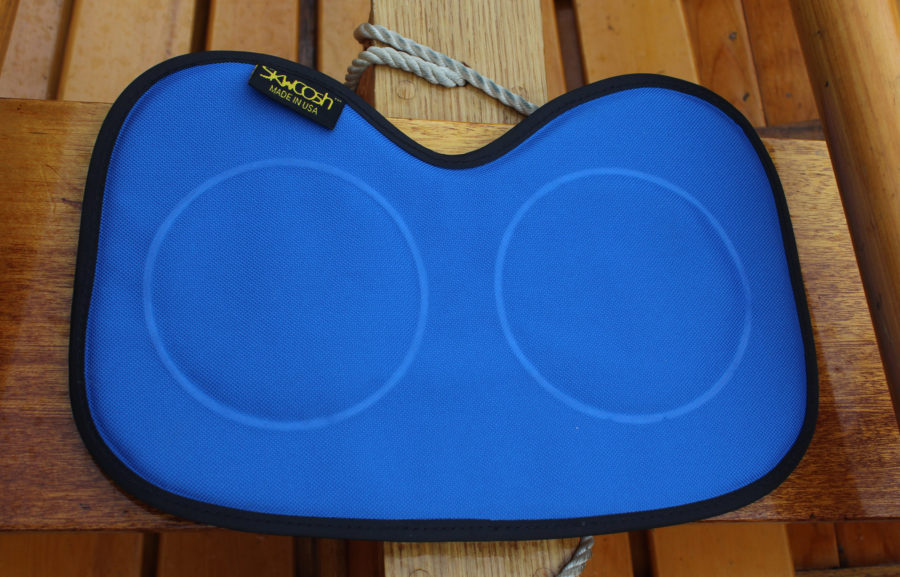
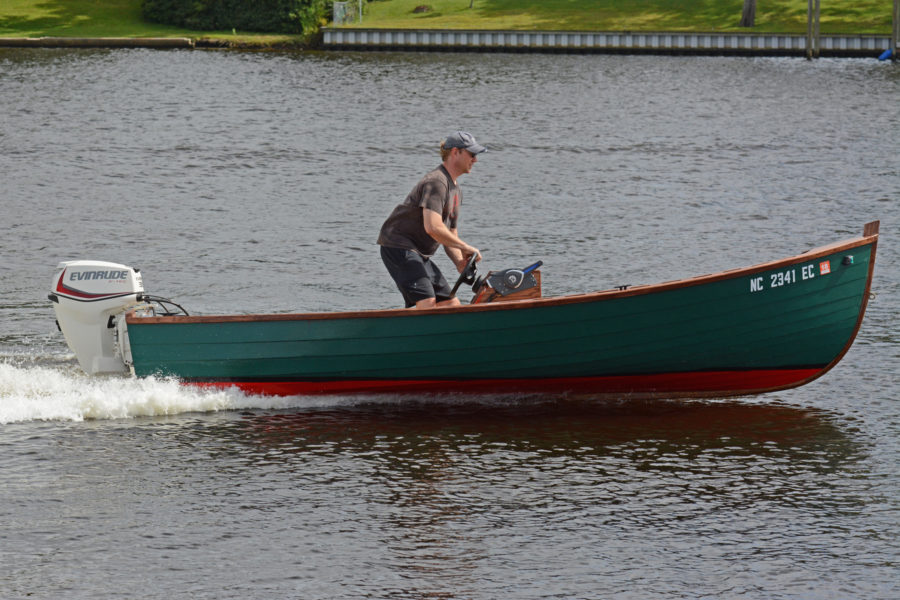




I know this is a relatively old article, but as a new subscriber I read it today (September 4, 2018). I have almost been there. I built a 7′ 10″ dinghy that took my son and me 45 minutes to pry up the basement, scraping a post and the opposite side wall in the process. I also built a shed in my garage and to get it out had to leave the roof off and we tilted the shed at 45 degrees to roll it out of the garage onto a trailer.
To avoid future problems I had a 24 x 24 foot garage with an 11 foot high barn door built as a shop. I am now outfitting this shop.
Regards,
Phil